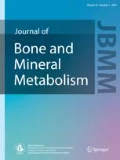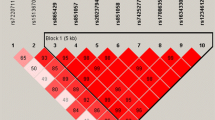Abstract
Apolipoprotein E (Apo E) polymorphism has been implicated in many chronic diseases, including Alzheimer disease and osteoporosis. Significant association of the Apo E4 allele to low bone mineral density (BMD) has been repeatedly reported. We here examined the Apo E genotype frequencies in the Chinese population (n = 692) and its relationship to BMD. A significantly lower frequency (a prevalence of 7%) of the E4 alleles was found in our Chinese subjects compared to that reported in Caucasians (14.7%) or in Japanese (11.7%). However, no significant association between the Apo E4 allele and BMD Z score was observed in our test subjects; this may be due to the rarity of the Apo E4 allele frequency in Chinese, which requires a larger sample size for detection of significant association. Significant associations detected between Apo E2 allele and BMD at the femoral neck in elderly women (P = 0.02) and at the spine in elderly men (P = 0.03) were in the opposite direction and thus regarded as false-positive results. It is concluded that the Apo E4 allele is rare in Chinese, and a larger population size is needed to see if Apo E4 is associated with BMD in Chinese.
Similar content being viewed by others
Author information
Authors and Affiliations
Corresponding author
About this article
Cite this article
Wong, S., Lau, E., Li, M. et al. The prevalence of Apo E4 genotype and its relationship to bone mineral density in Hong Kong Chinese. J Bone Miner Metab 23, 261–265 (2005). https://doi.org/10.1007/s00774-004-0593-0
Received:
Accepted:
Issue Date:
DOI: https://doi.org/10.1007/s00774-004-0593-0




